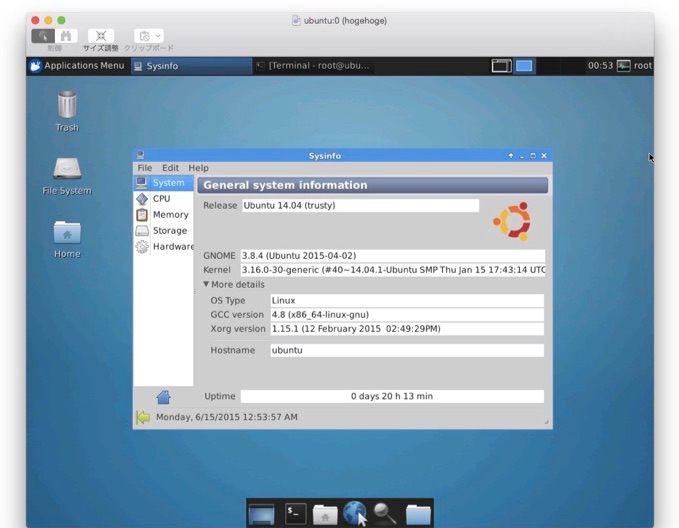

VIRTUALBOX UNIX ON MAC INSTALL
If it were a physical computer, we’d pop in a CD or other installation media, which would allow the machine to boot and install an operating system to its hard drive. There’s no operating system for it to boot with. Now you have a virtual machine, but its virtual hard drive is empty. Click the “Create” button in the wizard to create your new virtual machine.Name: This can be whatever you want, but since we’re simulating a server at our hosting company, we’re going to use the name “hostcom”.Go through the wizard dialog to configure the new virtual machine, leaving all values at the default except the following:.Launch VirtualBox, and click the “New” button in the toolbar to create a new virtual machine.Now we need to create and configure a virtual machine within VirtualBox. Basically, you’ve just downloaded a virtual Ubuntu installation CD.
VIRTUALBOX UNIX ON MAC ISO
Make note of the folder it gets downloaded to we’ll need to find it in a minute.iso stands for ISO 9660, a standard for representing the contents of CD-ROMs and DVD-ROMs as computer files. (Ubuntu is just one of many Linux distributions available, but we’ve chosen Ubuntu because it’s common and relatively easy to use.) You’ll have a choice between the latest version and a “Long Term Support” version choose the LTS version because it’ll be more stable.

We’re going to create a virtual machine to run a Linux server on.
VIRTUALBOX UNIX ON MAC PRO
These directions are available as a video workshop to our Pro students, but we thought we’d share the basic ingredients here as well so you can experiment with Linux servers yourself! This is a great way to try things out because it lets you copy the server to try out different configurations, take snapshots you can roll back to if you make a mistake, and more. So we figured out a setup that mimics a Linux server running out on the Internet somewhere -which is where you’d typically deploy web apps to -but uses VirtualBox to run the server as a virtual machine on your development system. We’re prepping a workshop series for our Pro students on deploying web apps to production, and we wanted a simple, safe way for students to follow along at home, without having to create an account on AWS / DigitalOcean / etc.


 0 kommentar(er)
0 kommentar(er)
